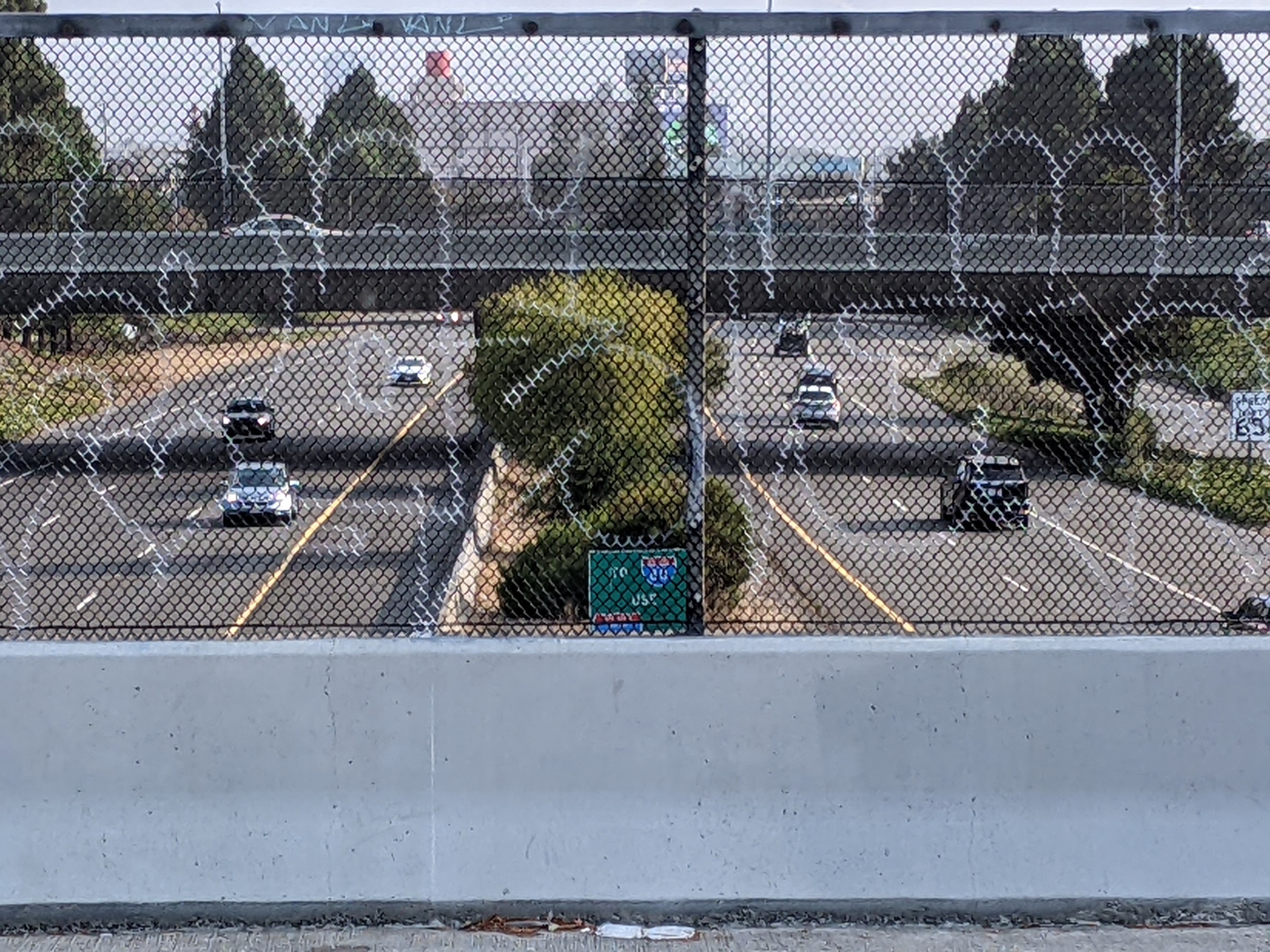Transportation Secretary Pete Buttigieg met with Oakland Mayor Libby Schaff and other officials Friday morning and took a bus tour of the city's efforts to repair the damage done by the freeway building age.
"Literally, where we are right now, there were homes," said Buttigieg as a chartered AC Transit bus they were riding in rolled over I-980, the infamous freeway that destroyed entire neighborhoods and cut off West Oaklanders from downtown.
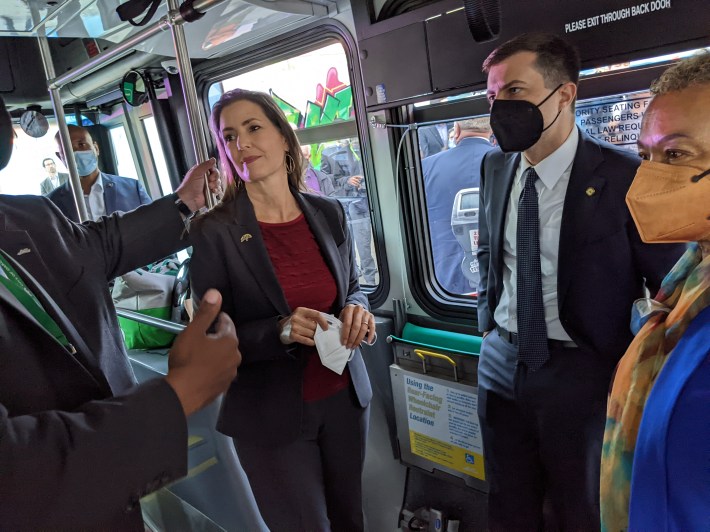
The tour started in the Jack London Square waterfront neighborhood on Broadway, before going under I-880, over I-980, and back through downtown. It showed the Secretary of Transportation a little bit about how federal grants would be spent in Oakland to try and restore and repair communities split apart by massive freeway overpasses and trenches.
"It's frightening as someone walking with my kids," said Nicole Ferrara, Transportation Manager with Oakland's Bureau of Great Streets, who also spoke on the tour. "I don't feel safe walking under these freeway underpasses."
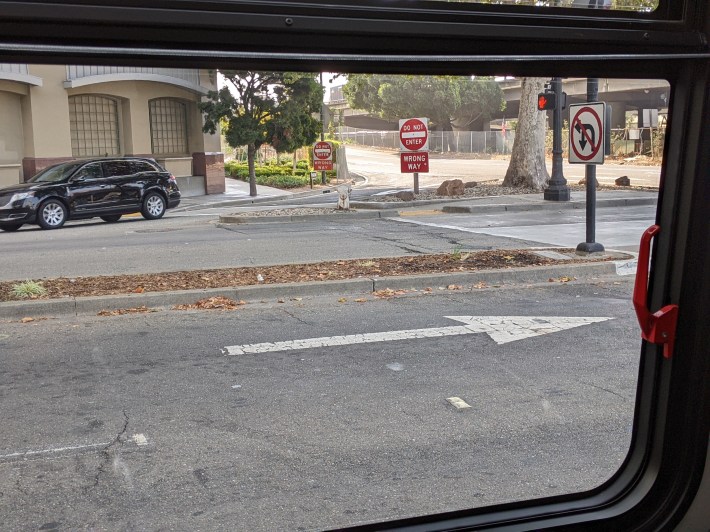
The mayor told Buttigieg and the other officials on the tour about the city's "Transforming Oakland's Waterfront Neighborhoods" or TOWN suite of proposals which will try and make those freeway crossings safer and less intimidating to people not in a car. A release from the city for the $366 million worth of projects explains that the idea is to "create urgently needed connection and remove barriers that have historically separated high priority equity communities from their waterfront." The city aims to close the slip lanes, make the freeway under-crossing more pedestrian friendly, and extend bus-only "red carpet" lanes on Broadway.
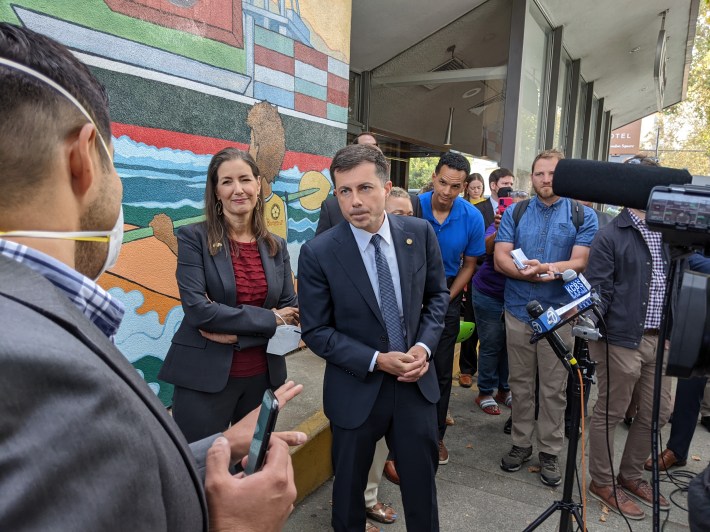
There's also a plan for a protected bike lane on portions of 7th. However, most streets will get nothing more than striped, unprotected bike lanes, despite the fact that the tour passed several locations and streets where cyclists have recently died on just such designs, such as on 14th Street and on MLK. Streetsblog spoke with new OakDOT head Fred Kelley before the tour started, around the corner from trucks parked on a typical unprotected bike lane on 2nd Street. "It's a challenge, they count on deliveries," he said, chalking the problem up to a lack of parking enforcement.
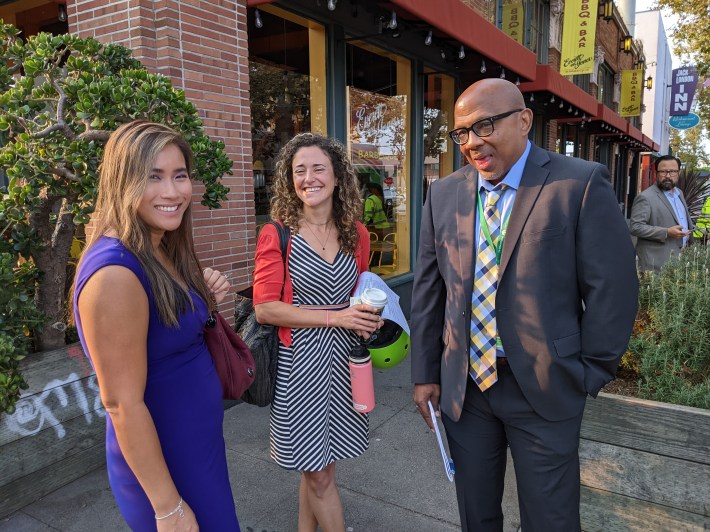
Of course, as Streetsblog has written ad nauseam, enforcement of bike lanes doesn't work and never has worked, anywhere in the world. The only solution is to use concrete barriers to physically protect cyclists and other vulnerable users from errant motorists, something which Kelley, who admits that he does not ride a bike, dismissed as too complicated for most streets.
Congratulations to US DOT Transportation Secretary nominee @PeteButtigieg! We're looking forward to continue working with you to make transportation greener and more accessible to all Americans! pic.twitter.com/MgisDV0EQh
— Lime (@limebike) December 15, 2020
Fortunately, the US DOT staff doesn't seem to agree it's acceptable to dismiss life-saving infrastructure, even to make deliveries more convenient for motorists and merchants.
"We can't expect everyone to take two tons of metal with them everywhere they go," said Buttigieg, who does ride a bike, at the conclusion of the tour. "Black and brown pedestrians are more likely to lose their lives...it does not have to remain so."

Ultimately, protecting vulnerable road users and fixing the damage done to communities by decades of prioritizing cars over everything can be reversed, said the politicians and lawmakers on the tour. But it's going to take a huge, multi-year effort to make it safe again for people to just walk and bike around their own communities. "We saw a literal gash in the neighborhood," concluded Buttigieg. "We have the opportunity to make this right."
